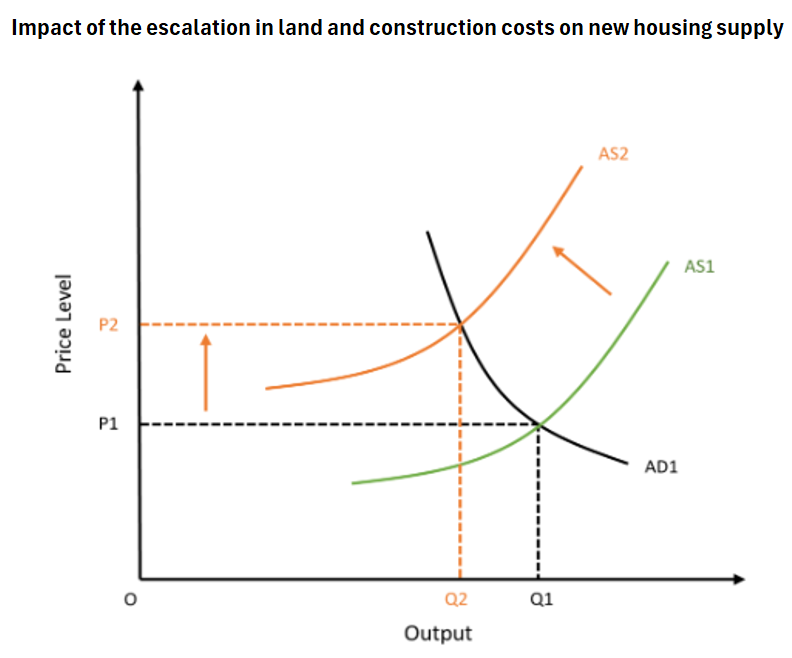The construction sector has experienced the nation’s highest rate of insolvencies, with 2,795 firms failing this financial year, up 24% on 2024.
As illustrated below by Justin Fabo from Antipodean Macro, construction sector insolvencies are tracking at around double the pre-pandemic norm:
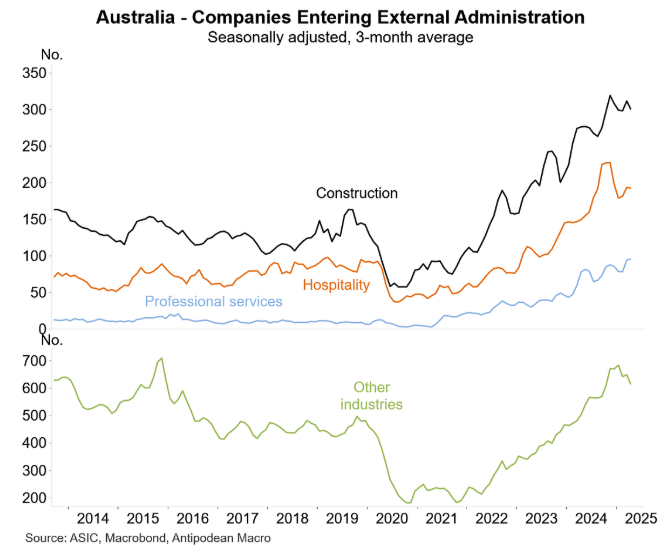
Mirvac CEO Campbell Hanan warned that the failure of around 7,000 builders and subcontractors over the last three years has stretched the development industry and is exacerbating the housing shortage.
“We have seen close to 7000 insolvencies in three years. That is a really significant event for a market to work its way through”, Hanan said.
“The fact that you have wonderful tier one builders losing money, still, four years after Covid, that is a sign that things have to correct in a certain way”.
“I think ultimately, the cost of building everything, in every asset class, is going up, and going up for a period of time”, he said.
As Alex Joiner of IFM Investors illustrates below, residential construction costs in the ABS Producer Price Index have increased by 43% since the covid-19 pandemic began.
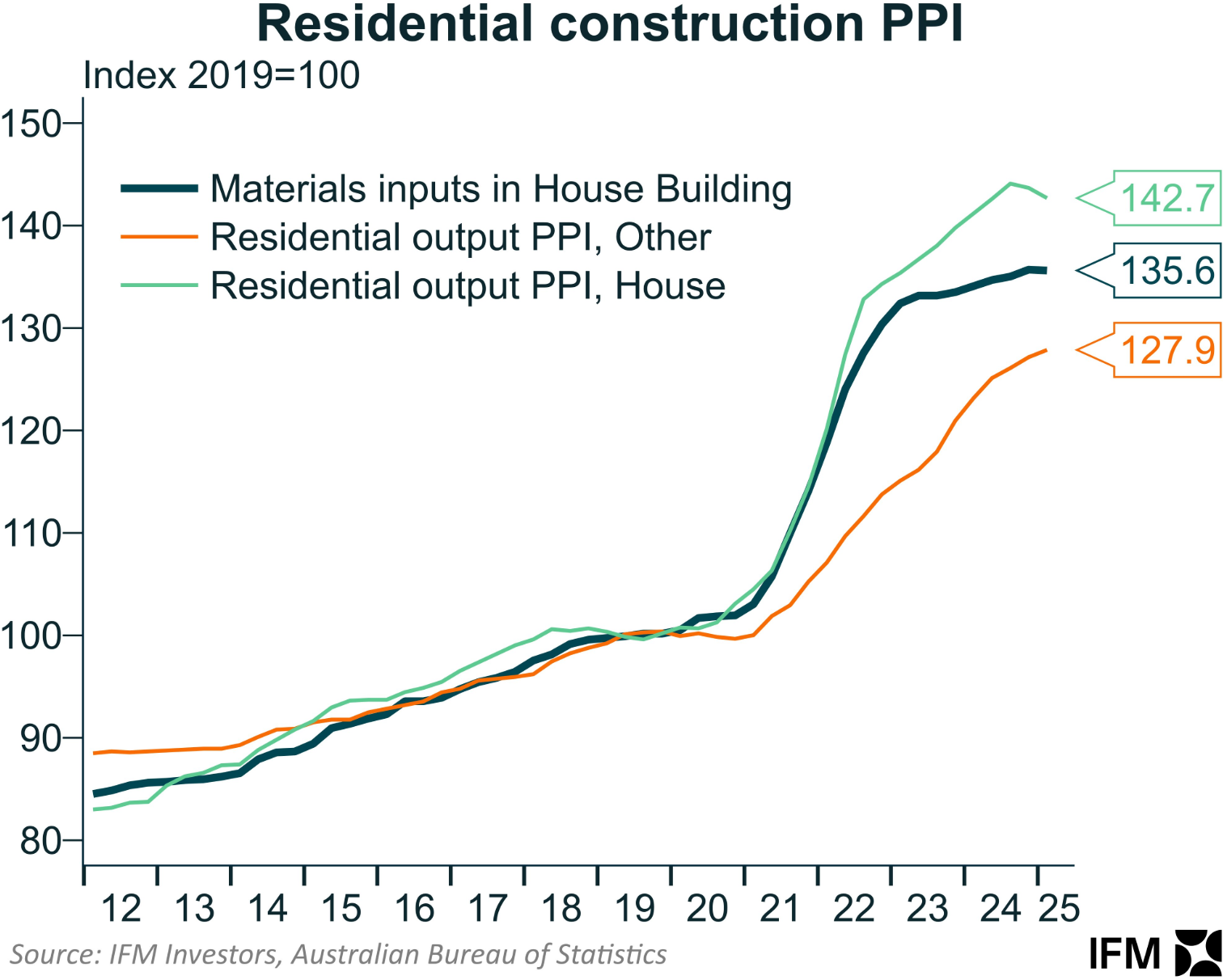
Most building inputs have seen considerable cost increases during 2019.
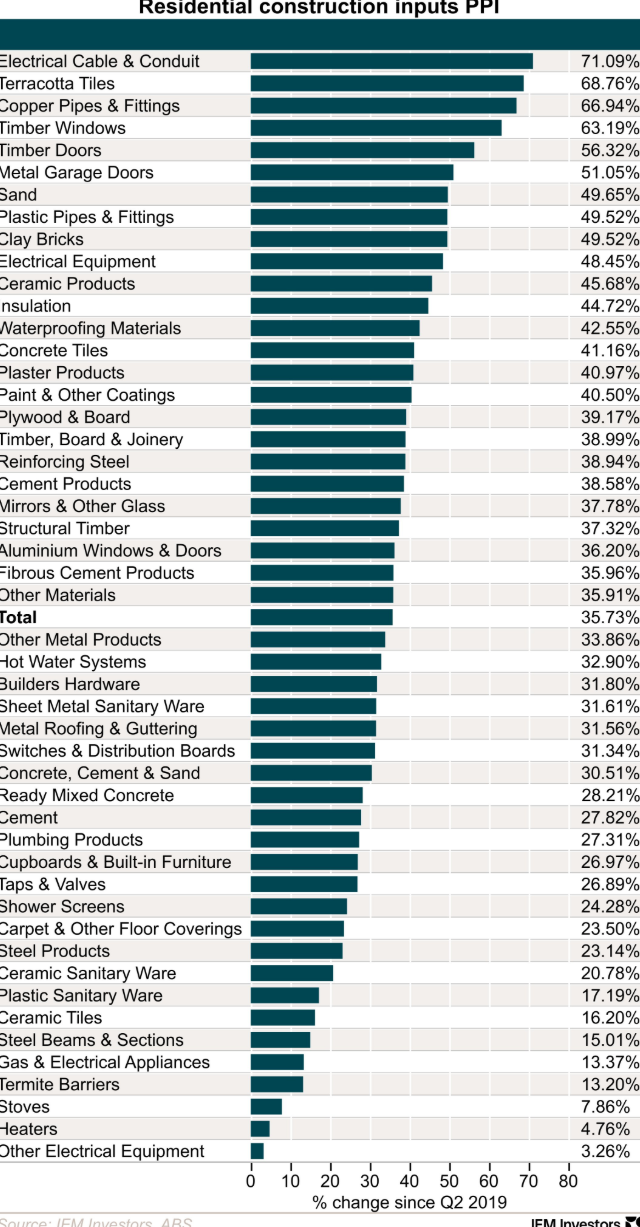
Last week, Domain reported that the cost of building a new house surged to a record high of $504,109 in Q1 2025, up 6.5% from $473,230 a year earlier.

As illustrated above, the cost of building a new house has risen a whopping 52.6% since March 2019 when it cost only $330,430.
To add further insult to injury, the cost of building apartments is even more expensive than for detached houses:
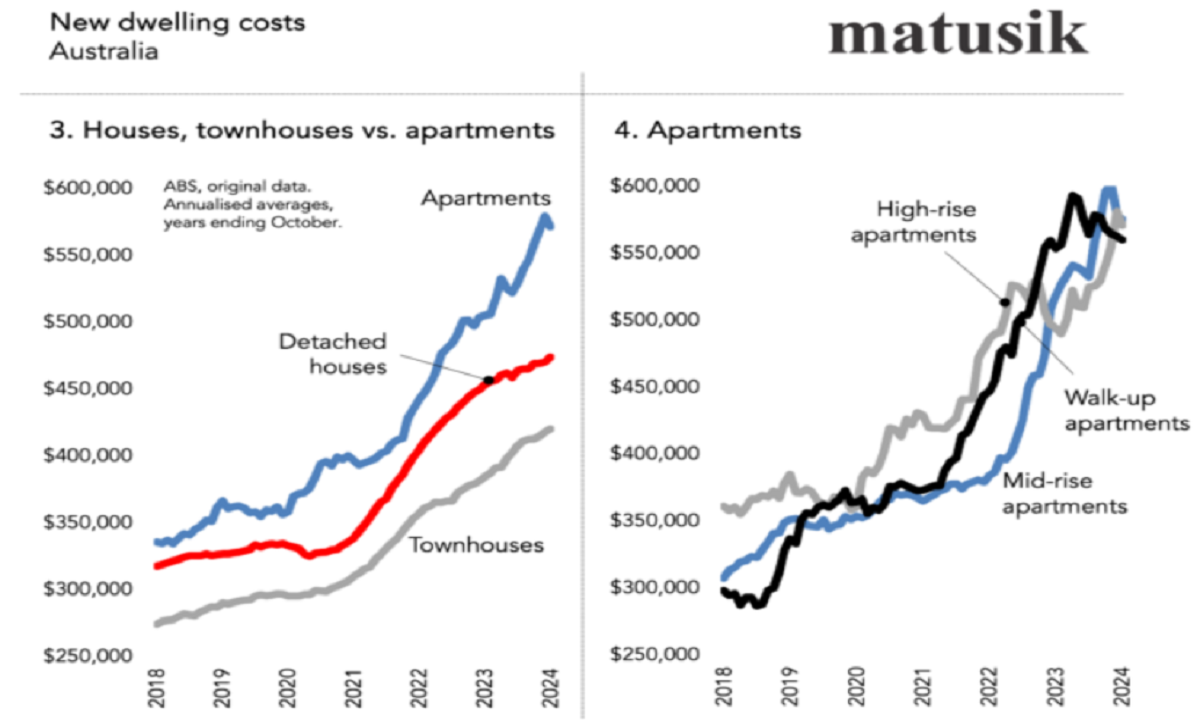
Master Builders Australia chief economist Shane Garrett warned that it was taking longer to build a home, which is illustrated below by Shane Oliver from AMP.
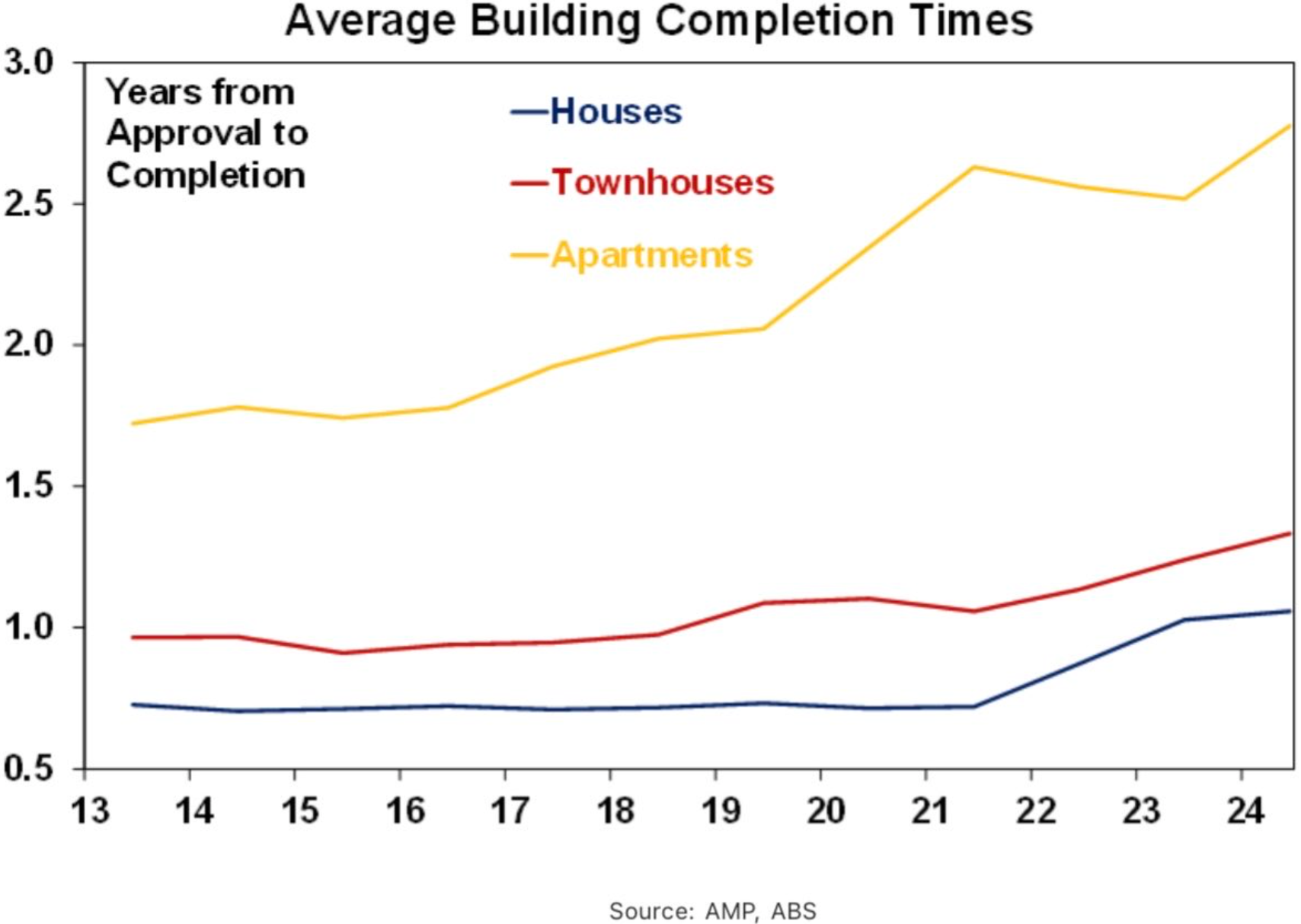
“Time is money when it comes to home building, so the longer it takes to build, the more money you have tied up in it”, he said.
“People have to be paid by the hour when it comes to the construction business and when it gets stretched out over a considerably longer period, that also generates cost increases”.
Garrett also warned that Australia’s construction workforce is insufficient to meet the federal government’s target to build 1.2 million homes over five years.
This view is supported by Infrastructure Australia’s Public Infrastructure Workforce Supply Dashboard, which shows that Australia has a critical shortage of workers to meet the nation’s infrastructure needs:
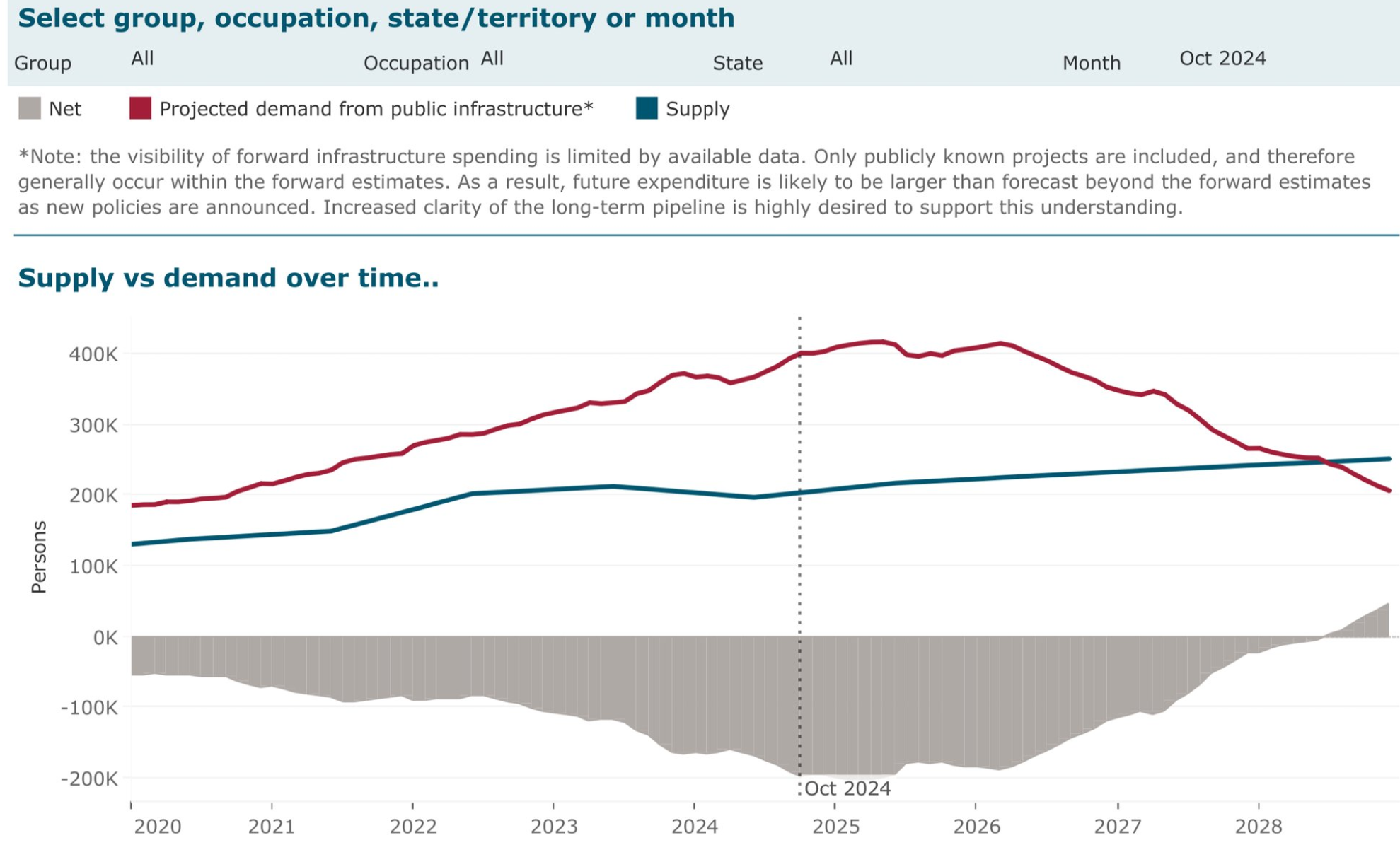
Meanwhile, residential lots have also experienced severe cost inflation:
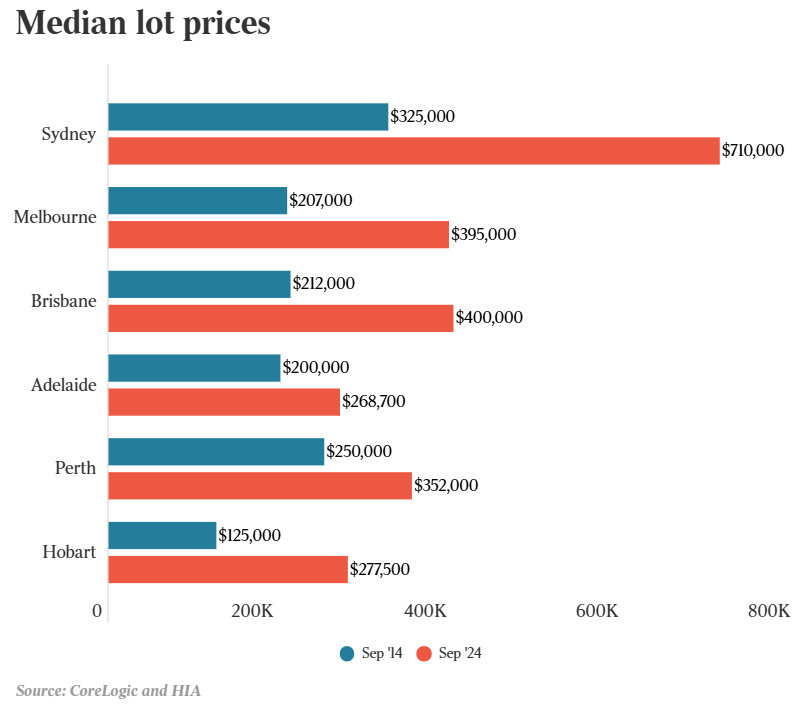
The combined hyperinflation of land and construction costs has made it too expensive to build housing in Australia.
Australia’s housing supply curve has shifted to the left, increasing the cost of construction across all price points and limiting output.
